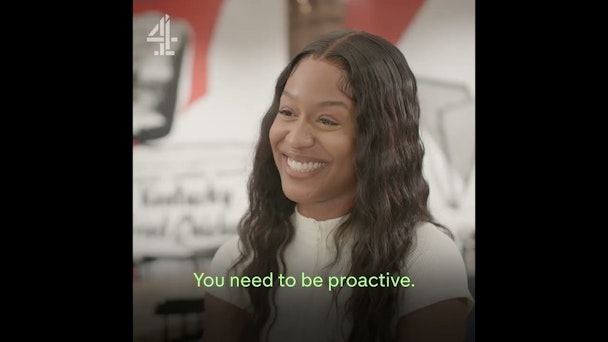How to pitch branded entertainment: lessons from Channel 4
More than ever, brands are looking to create content, not just ads, to reach audiences. We look at how UK broadcaster Channel 4 has been working with brands to produce digital content, with an employment series for KFC and a Christmas show for Boots among its latest commissions.

The Employables
David Amodio is deputy head of digital innovation at Channel 4 and also heads up the broadcaster’s in-house digital production unit, 4Studio. He is working hand-in-hand with agencies and their brands to craft the perfect briefs to help land entertaining digital content.
This past year, brands have gotten a lot more comfortable with the idea of creating content for social rather than just paid advertising. TikTok has been a major accelerator of this, allowing brands to dip their toes into entertainment.
For media publishers like Channel 4, LadBible, Jungle Creations and Joe, their proposition is to produce and distribute brands’ content across their established audiences.
Advertisement
Channel 4 has recently teamed up with Boots for a three-part Christmas-themed celebrity challenge series dropping in early December and with KFC on a series about youth employment.
KFC, ‘The Employables’
KFC tasked Channel 4 to come up with an idea that could raise awareness of its youth employment schemes, The Kentucky Club and Hatch. The Employables, which debuts today (November 16), is a three-part series that exposes the barriers young people face when entering the workforce.
The series profiles three young people who are struggling to find work. Each one is then matched with a mentor who helps guide them with advice and help to find work.
Elf, ‘Ready or Not’
Past shows have included Ready or Not with the makeup brand Elf, which sees beauty influencer Adeola Patronne and her friends take on challenges like stunt women, football and working at an animal sanctuary but ensuring they look their best through makeup products.
Advertisement
The 15-minute episodes had a seven-minute average watch time and the campaign results showed Elf achieved a 56% unprompted recall and 78% prompted recall among 16-24s. 85% of that same demographic reported positive sentiments about watching the content, with emotions like amusement, happiness and contentment recorded in the post-campaign polling.
Heinz, ‘Flex Kitchen’
Heinz Flex Kitchen, meanwhile, was created to spread awareness about Heinz plant-based products. The concept was for Channel 4 talent to brag about their favorite vegan dishes. The show featured Alex Brooker, Kerry Godliman, Suzi Ruffell, Lou Sanders and Phil Wang. 23 million people viewed the show and Heinz reported a 64% improved consideration to use Heinz products when cooking plant-based meals.
How to craft a perfect pitch
Producing entertaining content is a very different game to creating ads and advertisers need to be aware of a few crucial differences. The first piece of advice Amodio offered is for brands to be “honest” to themselves about what they want to get out of branded content.
Suggested newsletters for you
“If you want to just push product and say sell a product that is not necessarily a branded content piece that you want to do in the first place,” Amodio says. “Any brand should be asking themselves: ‘Do I want to make content here am I trying to say something and tell them a story, or am I trying to sell them a product.’” Branded content works best when trying to change perceptions or create a new narrative, he adds.
When writing the brief, Amodio advises against a long list of KPIs. “Some of the briefs we get are just a list of asks, which is quite hard to get across in a four or five-minute piece.” When it’s a long list of objectives, his team finds it hard to spin that into an idea. Those briefs often fail at getting signed off, Amodio admits.
“There often a two-way dialogue and a game of tennis between the sales team and our strategy team and the agency where we have to ask provocative questions and ask to be a bit more concise, ask them to be clear about what the objectives are,” he adds.
When the brand is absent from the room during the briefing stage, it can be a massive disadvantage to the project getting over the line with a publisher. “If the brand is not engaged, you can sometimes go around in circles,” Amodio says.
“When we look at our conversion rates, when the clients in the room versus for the clients not in the rooms, guess what, it’s much higher conversion rate because they’re not engaged in really making content,” he says.
His final piece of advice for pitching brands is around clarity on audiences. Knowing what audience you are looking to reach helps inform a publisher about which platform the content will sit when and then helps inform the creative execution. For example, a 15-minute YouTube and Channel 4 streaming show would have a different audience than a three-minute TikTok.
It can also be beneficial to suggest how the idea could be developed into a longer-running series and have a life beyond a one-off episode. “Brands that know what they are trying to achieve and are committed to direction that helps us see how it can grow and evolve,” he adds. For example, the show Dominos Yodal Rap is on its fourth series and Barclay’s Money on My Mind is on its second run.

